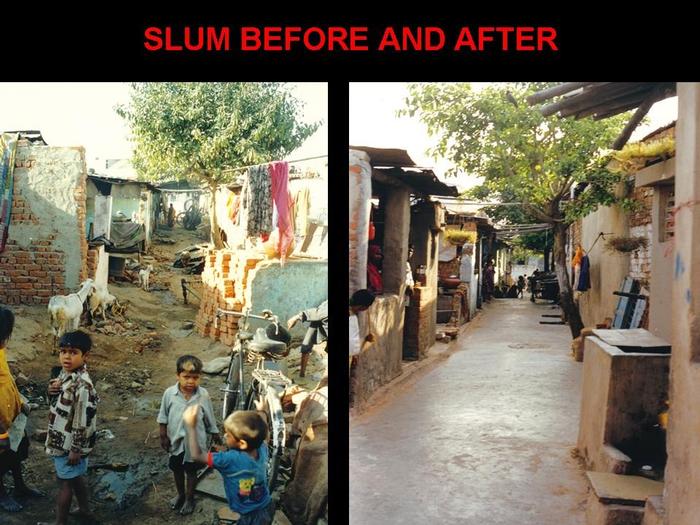Tarun Bhasin & Vineetha Nalla ProposalImagine There are No Slums : Mainstreaming an image with dignityBy 2030, 50% of the world population will be living in metropolises, 33% of these in ghettos, i.e. one out of every six humans. As an architect one is tempted to tackle the ghetto sprawl with felicitous built spaces and fascist schemes. But consider Mr.X who has been toiling in his poverty with his family of five to six whom he can hardly afford to feed; his child stands vulnerable to the diseases that put the entire society at risk of an epidemic. Having been handed down the land from previous generations he does not desire to let go of it nor it is feasible. A meager volume won’t sustain his family in the long run, for there is no ‘long run’ for people who struggle to sustain each day. Such was the story of Krishnapuri, Indore in 1985 – Irregular and unclean paths, clogged sewer lines, dilapidated walls and sheds, and a ‘glorified’ community toilet breeding pigs and vermin. Himanshu Parikh intervened. No flamboyant structures, no fancy concepts; he worked on water and sanitation as the basis of all infrastructure. Door to door sanitation, shunning the public toilets, provided dignity to people. Cleaning of lanes, topography management, development of roads, storm drainage, sewerage, street lighting and earthworks was taken up to refurbish paths, nodes and lake fronts. He created the half that the people could not have achieved on their own, leaving the plots undisturbed. What was unaffordable was made affordable. The process encouraged participation of local youth and gave legibility to the small many interventions in the eyes of all. That created a sense of belonging to the whole. An identity once created, the desirability of lifestyles increased. From 1985-1995, the team of civil engineers tantalized the public to improve on their education, health and income. Results showed, for Mr.X having the sense of ownership over the plot and his child insusceptible to diseases; had the sense and resources to look at a felicitous built space and education of his child, as investments for the 'long run'. The family now thought of a ‘long run’. The streets were now the pedestal for an individual, that once were an expression of their despondency. The Rs.6000 investment per household provided by the government, put right, brought in an additional investment of Rs.75000 by the dwellers themselves. The plots too, improved. "A society that still has a goal, still has an icon, is a society supported by the concept of progress." – Kisho Kurokawa. Himanshu Parikh became the icon in mainstreaming the ghettos. Having worked with him for a brief period,recently, it can be said that he is a man who appreciates simple and practical solutions. The essay covers the documentation of Krishnapuri, two decades after the completion of the project, to analyse the progress that the society has made and the state of individual minds. It covers under detailed discussions with Himanshu Parikh, his process, approach and methodology, that has improved the lives of more than half a million people; as answers to the global scenario. Additional Help and InformationAre you in need of assistance? Please email info@berkeleyprize.org. |
|


